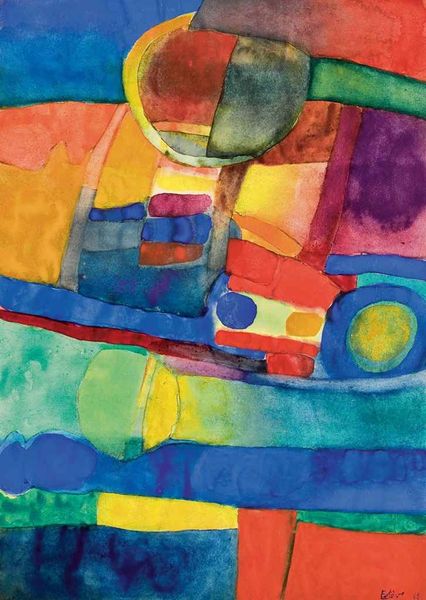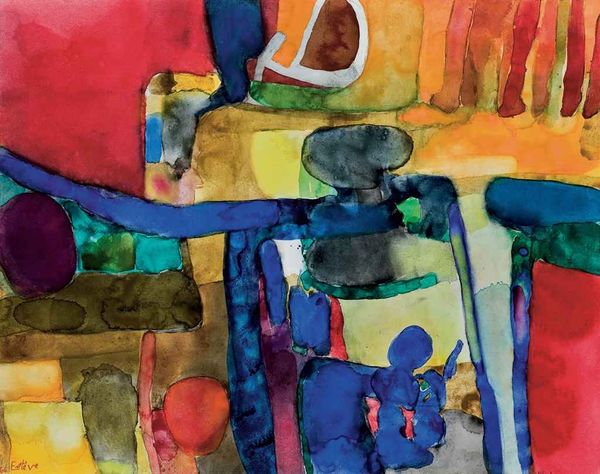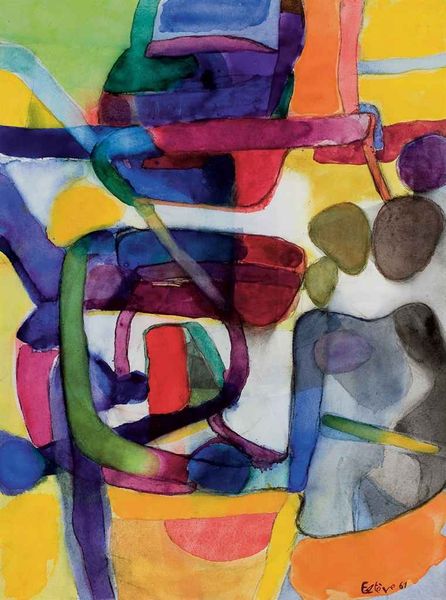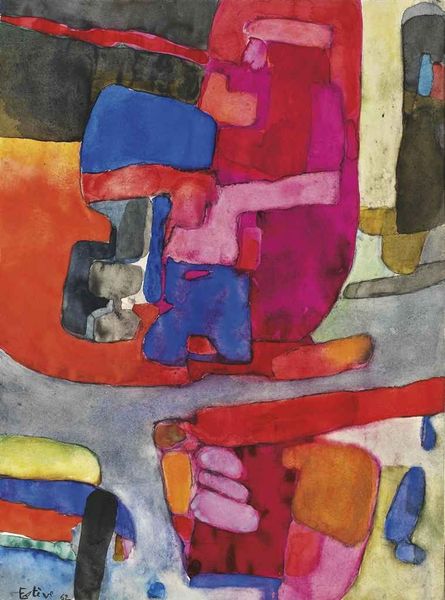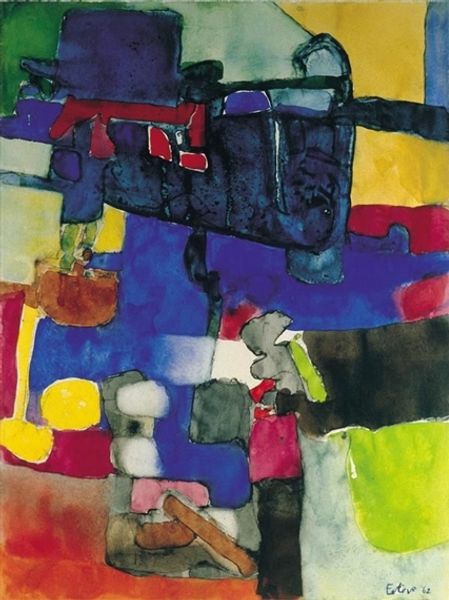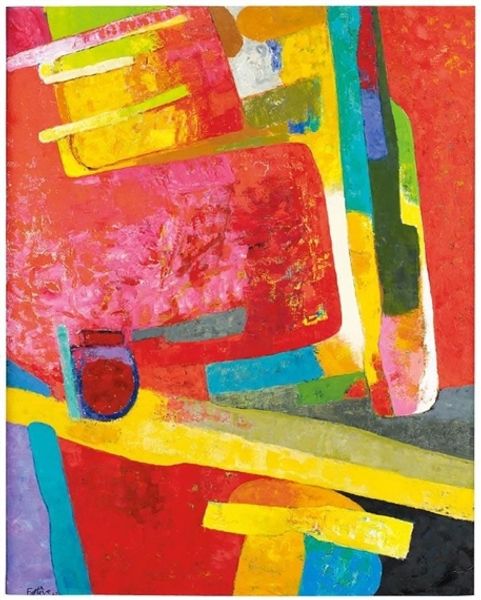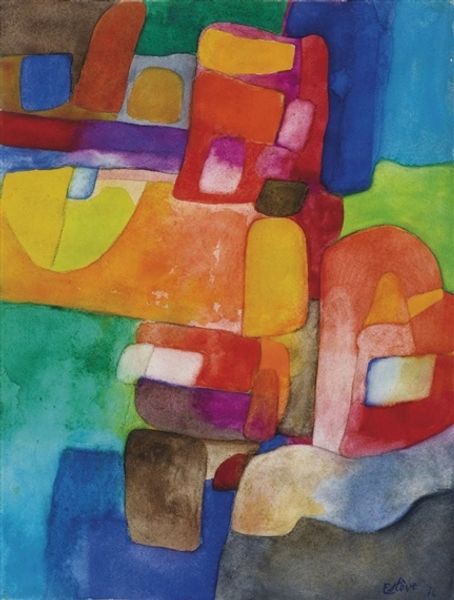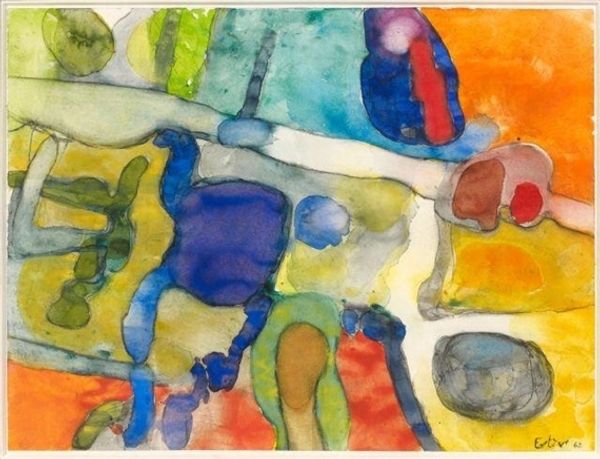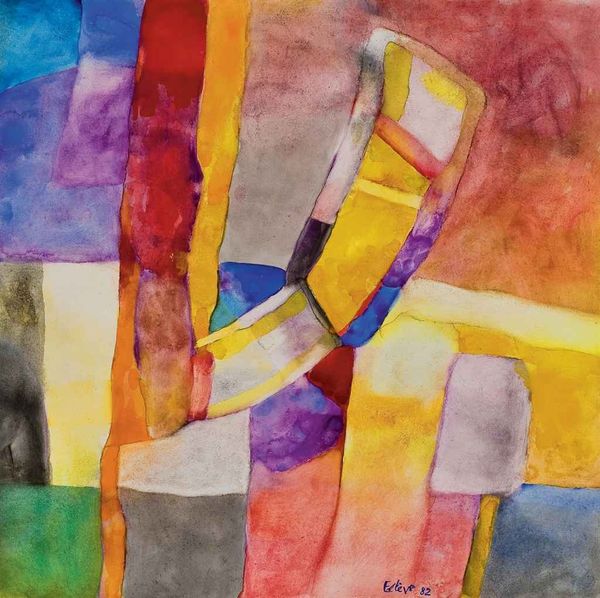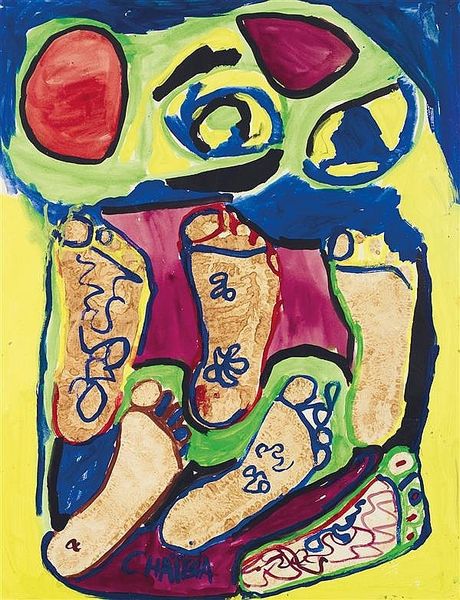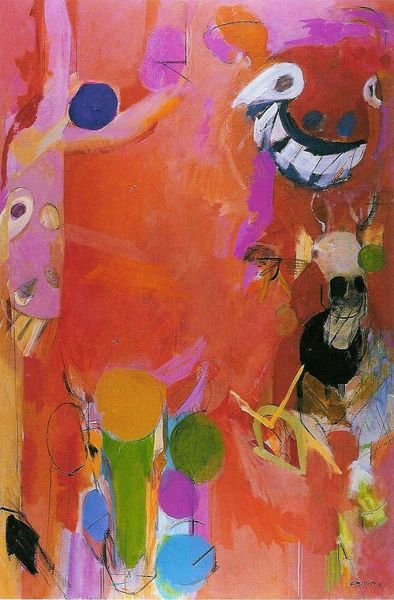
watercolor
#
oil painting
#
watercolor
#
abstraction
#
modernism
Copyright: Maurice Esteve,Fair Use
Curator: This piece, simply titled "Untitled", was created in 1963 by the French artist Maurice Estève. Editor: My first impression is pure color – a delightful clash of vibrant shapes that feels both playful and considered. It’s interesting to me the scale and technique used here for an watercolor – very brave and bold. Curator: Indeed. Estève, while rooted in the traditions of French modernism, developed a distinctly personal vocabulary. During his lifetime he exhibited widely and played a key part in shaping mid-century abstraction. It's easy to forget the political undercurrents within abstract art - this kind of art offered an escape, if somewhat subtle, from the more prescribed aesthetic mandates elsewhere in the world. Editor: I see that echoed in the fluid interaction of watercolors. There is a certain kind of materiality achieved here through this, isn’t it? The layering and bleeding of colors isn't hidden; it's very much on display here. Almost looks like a study, or experimentations for an Oil Painting. The blurring suggests spontaneity and the kind of creative freedoms artists working in this medium experienced. Curator: Yes, and considering the art market back then, it makes you think. This piece presents as deliberately non-monumental. Estève was celebrated, but there are social and class elements embedded into a painter selecting an approachable style that makes this feel so revolutionary. Editor: Revolution by way of the dematerialization! With just looking at it, one does feel the pull between considered forms and loose, chance events from working with watercolors. How are these visual relationships related, though, is very complex to unpack just on its own! Curator: Right. In "Untitled," we witness Estève participating and even propelling the idea of the universal visual language promoted throughout this historical context. Editor: Ultimately, “Untitled” prompts one to question preconceived assumptions on traditional artmaking, by looking closely and feeling the ways in which we interact and even produce them today. Curator: And considering the evolution of art, how these social forces, however subtly, have transformed our understanding.
Comments
No comments
Be the first to comment and join the conversation on the ultimate creative platform.
